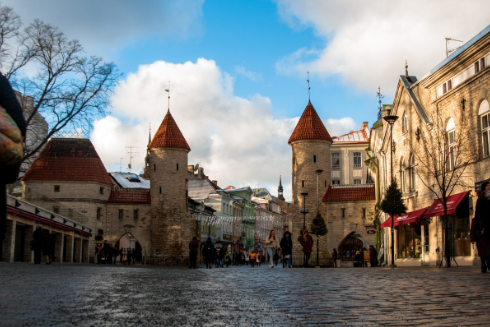Estonia’s PV market slowed this year after 12 months of robust growth. Now the dial has swung back the other way again as the government readies a new renewable energy capacity procurement scheme. Estonia’s minister of economic affairs and infrastructure, Taavi Aas, has signed off the first round of the nation’s renewables auctions.
“The investment costs of renewable energy production equipment have decreased significantly in recent years so it is logical to replace the current guaranteed support scheme with lower offers,” said Aas.
The government said it intends to use this first, limited capacity auction to test the water in the market. After this procurement exercise, Estonia will seek to install enough capacity to generate 5 GWh of clean electricity every year from 2021.
Feed-in premium bidding
Under the new rules, renewables generators will receive the average monthly price per megawatt-hour generated plus a 12-year feed-in premium set at the level developers offer at auction. The maximum feed-in premium is €53.70/ MWh with a ceiling of €93/MWh for the premium and average market price combined.
Andres Meesak, chief executive of the Estonian PV Energy Association, believes bids will be significantly lower than the €53.70 feed-in premium limit and he suggested prices of around €10-15/MWh. The current auction round, which closes on March 18, will only apply to renewables systems with a generation capacity of 50 kW-1 MW. The process is being administered by transmission system operator Elering.
PV association chief Meesak was optimistic about the prospects for solar in the trial procurement round, given the small size of generation systems eligible. However, with the government aiming for annual new renewables capacity sufficient to generate 450 GWh from 2021, solar could face strong competition from wind, and possibly from combined heat and power (CHP) biomass projects too, according to Meesak.
“Also, on the large scale auction, there might come separate slots for different technologies or actually there [could be a] split between controllable [dispatchable] – biomass-CHP – and non-controllable: wind [and] PV” Meesak said. “We yet don’t know how much will be earmarked for non-controllable technologies and how much will be reserved, basically, for biomass.”
Solar revolution
Last year Estonia’s installed solar generation capacity rocketed from 17 MW to 107 MW, said the PV association chief, on the back of a generous incentive scheme which paid a 12-year feed-in premium of €53.70/MWh for arrays with a capacity of up to 1 MW. The combination of high subsidy and the end of the European Union’s minimum import price for Chinese modules created the perfect incubator for Estonian solar.
Small arrays and high levels of electricity self-consumption will form the backbone of Estonian PV, Meesak said last year. “The more electricity is consumed on-site, voiding purchase from grid, the sooner is [the] break-even point and higher project IRR [internal rate of return],” he said. “This defines Estonia clearly as a rooftop PV market for some years to come. Especially as energy efficiency minimum requirements tighten up, like in the whole of Europe.”
With solar offering the most cost-effective solution to near-zero or net zero building standards which will be applied in the nation from 2021, Meesak predicted new buildings alone will contribute 22-25 MW of new capacity in Estonia annually from that point on.






